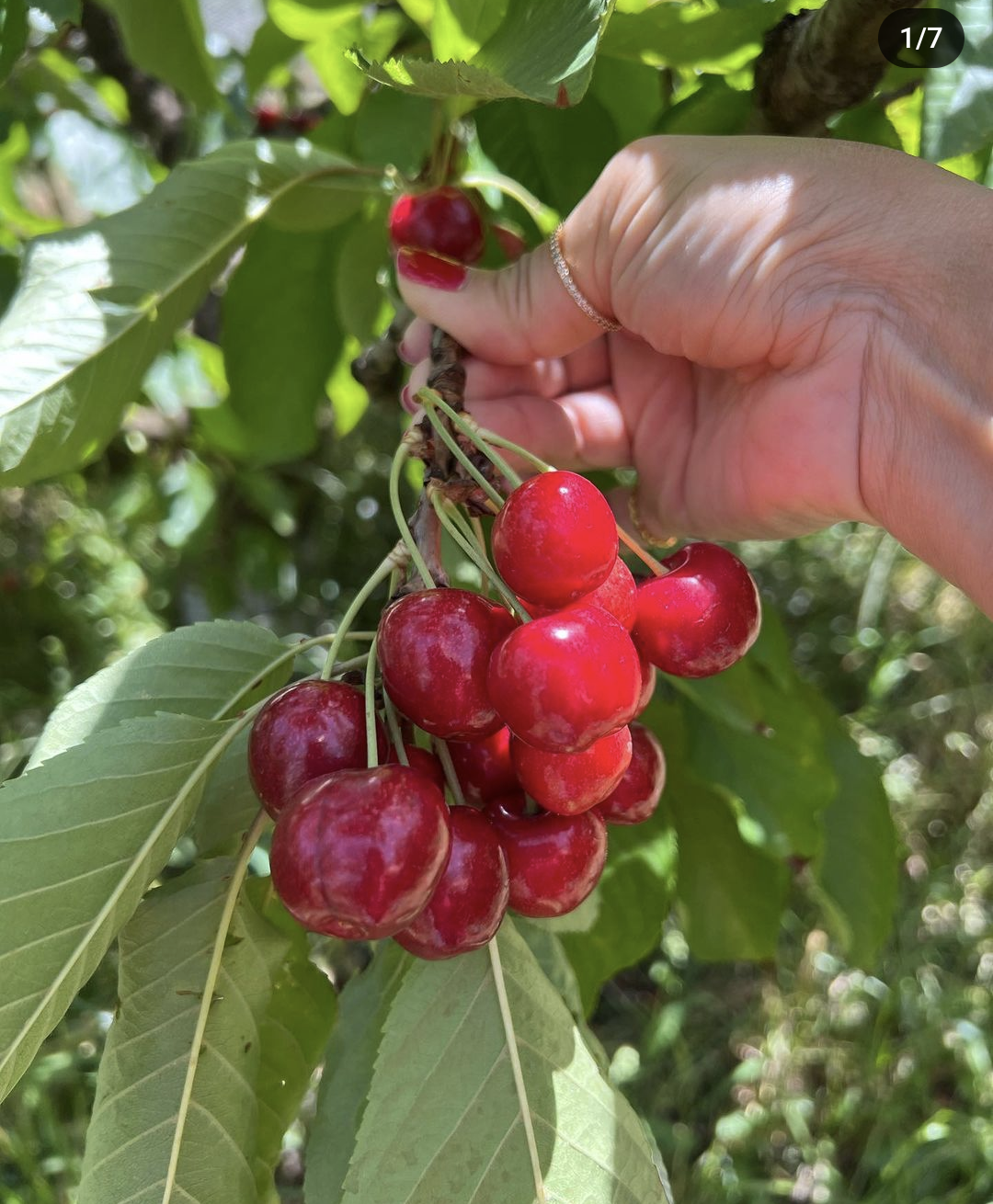Fruits
Apple
The apples we produce are fresh and juicy. The apples are rich in fiber, vitamin C and various other antioxidants. Studies show that eating apples can have multiple benefits for your health. We have different varieties and types of apples such as Royal Delicious apples, Golden, Granny Smith, Red Gold, Rich Red, Red Delicious, Galas and many more. Himachal is widely known for delicious red coloured apples. Apples are grown across the hill state. However, upper parts of Shimla district, including Jubbal Kotkhai, produce 70 per cent of apple produce in Himachal.
Planting of apple trees typically occurs during the winter months, with farmers preparing the soil and planting saplings. Adequate irrigation and fertilization are crucial during the initial stages to ensure healthy tree growth. Additionally, farmers employ various techniques such as pruning, thinning, and pest control measures to maximize yield and quality.
Apple pruning is basically done in the winters. This is a horticultural practice involving the selective removal of certain parts of an apple tree, such as branches, shoots, or buds. Pruning is an essential aspect of apple tree maintenance. Pruning is carried out during the dormant season, typically in late winter or early spring, when the tree is dormant (period of rest for the trees) and its growth is minimized. Proper pruning techniques include making clean cuts and avoiding excessive pruning. Pruning is essential to minimize stress and maximize the benefits to the tree.


Apple Facts
- Most of the antioxidants found in apples, including quercetin, are located in the skin.
- Apple trees take at least four to five years to start producing fruit.
- It takes the energy of 50 leaves to produce one apple.
- People who love apples are said to be outspoken, charismatic and enthusiastic.
- Apples contain 0 grams of fat or sodium and have no cholesterol.
- Apples are members of the rose family.
- Apples have high levels of boron, apples can help improve your memory, mental alertness, and electrical activity of the brain.
- Apples are full of fiber and can help you feel full on fewer calories – which can ultimately help in weight management. Plus, fiber fights cholesterol and lowers your heart disease risk.
- Apple trees can live to be about 100 years old.
- It takes about 36 apples to create one gallon of apple cider.
- Most apples are still picked by hand.
- There are more than 7,500 apple varieties in the world
- The science of apple growing is called pomology.
- An average tree produces 381 kg of fruit.


Cherry
Our orchards have various varieties of cherries. The cherry season starts from April onwards. Cherry contains Vitamin ,C,A and K. The cherries we produce are natural and organic. The cherry season Starts from April and we start taking orders from March onwards. We select cherry varieties suited to the region’s climate and soil conditions, such as durone nero, merchant and Stella. Planting typically occurs during the autumn months.
Cherry trees require regular irrigation, especially during the fruit development stage so that enough moisture level is maintained. Additionally we apply measures to protect the delicate flowers and young fruit from weather conditions, such as hailstorms and frost, which can pose significant risks to cherries.
In Himachal Pradesh, Shimla, Kullu, Kinnaur, and Mandi practice cherry cultivation. These areas have suitable temperate climate and well-drained soil, providing an ideal environment for cherry trees to grow.
The cherry harvest in Himachal Pradesh begins in late spring to early summer. We carefully handpick the cherries, ensuring careful handling to prevent bruising and damage to the fruit. Harvested cherries are sorted based on size, color, and quality before being packed into punnets or boxes for transportation to markets. Post-harvest handling play a crucial role in maintaining the freshness and quality of cherries. Rapid cooling and storage in controlled environments help extend the shelf life of the fruit. Many farmers in Himachal Pradesh have adopted modern cold storage facilities and transportation methods to ensure that cherries reach consumers in optimal condition.

Cherry Facts
- The average cherry tree has 7,000 cherries.
- There are two main types of cherries: sweet and tart.
- Cherries are a natural source of melatonin, a hormone that regulates sleep-wake cycles.
- The antioxidants and anti-inflammatory compounds found in cherries may contribute to heart health.
- In Japan, cherry blossoms symbolize the transient nature of life and are associated with beauty and renewal.
- Traverse City, Michigan, is famously known as the “Cherry Capital of the World.”
- In traditional herbal medicine practices, cherry preparations were used to alleviate conditions like arthritis, gout, and insomnia.
- Cherries come in a variety of colors, including shades of red, yellow, and black
- Unlike Apples Cherry trees rely on bees for pollination.
- Cherry trees provide food and habitat for various wildlife species.
- According to archaeologists, cherries consumption was usual in the Stone Age.
- A cherry tree can be harvested up to six or seven times during the same season.
- Even though cherries are of two types There are more than 1000 varieties of them.
- Cherries can be harvested with a tree shaker in under 10 seconds. The action is so violent it can reduce the tree’s life by 7 years.
